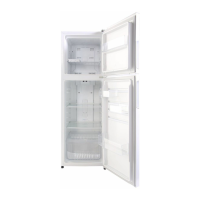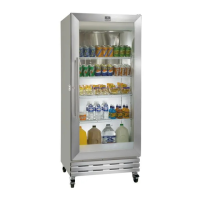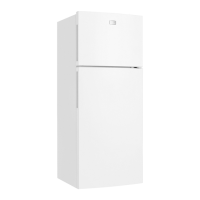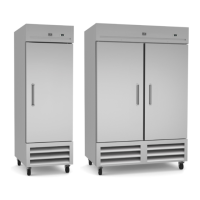CLEANING & MAINTENANCE
34 MAINTENANCE & REPAIR
CLEANING THE CABINET EXTERIOR
Wipe the exterior occasionally with a cloth dampened
in mild detergent water; rinse, and wipe dry with a
soft, dry cloth. Do not use abrasive or caustic
cleaners or scouring pads.
CLEANING THE CONDENSER - FIG. 1A
Periodic cleaning of the condenser can be easily
accomplished by brushing the coils with a soft brush
and/or using a vacuum cleaner with a brush
attachment.
Be sure that dirt, dust and collection of other debris
do not build up to a point air circulation through the
condenser is restricted.
CLEANING THE STORAGE COMPARTMENT
1. Remove product and store it in another suitable
cabinet, if possible. Be sure to prevent spoilage of
the product which may occur if it is left at room
temperature.
2. Turn OFF the thermostat and unplug the cabinet.
3. Remove the can skirts.
4. Defrost completely prior to cleaning.
5. Wash the can skirts and the entire interior storage
area with warm water and baking soda solution —
about a tablespoon of baking soda per quart of
water. Rinse thoroughly with clean water and wipe
dry.
This procedure can also be used for cleaning door
gaskets.
6. A drain hose (FIG. 1B) is provided in the
compressor compartment. Connection is made to fit
a standard garden hose for ease of draining water
from inside of the tank area.
IMPORTANT: Do not use any objects or cleaner which
may leave residues, odors, or particles. Avoid the use
of strong chemicals or abrasive cleaners which may
damage the interior surfaces and contaminate product
within the storage area.
6. Wash, rinse, and dry the can skirts while they are
outside of the cabinet, using the same procedure as
described for the storage area.
7. Be sure to correctly reinstall the can skirts, plug in
the cabinet, set the temperature control and allow time
for cooling of the storage area before storing product.
A
B
Dipping Cabinet 1298.02 2/3/03 1:14 PM Page 36
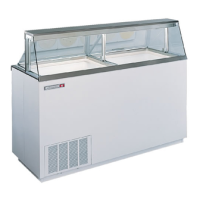
